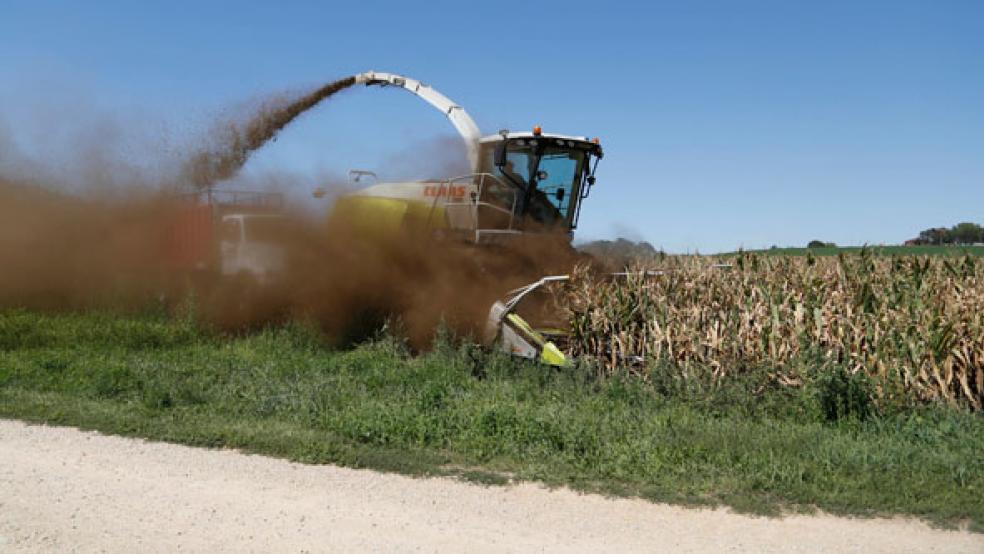Farming has become the poster child for crony capitalism, and the GOP has emerged as its enabler. It’s a disgrace.

House Republicans managed to split the so-called farm bill into two appropriately separate pieces – food stamps and agriculture -- but then passed the farmer support section stuffed to the gills with cynical handouts. Carving the food stamps program out of the massive $955 billion, 1,150 page “farm bill” passed by the Senate makes sense; there is no coherent reason to link those two measures.
The massive anti-hunger program, officially the Supplemental Nutritional Assistance Program (SNAP) accounts for 80 percent of the bill’s spending; hiding it under the “farm” umbrella is dishonest legislative sleight-of-hand. So far, so good.
RELATED: PUZZLING RISE IN FOOD STAMP USE AS ECONOMY IMPROVES
But the point of the split was to allow greater oversight and reform of not only SNAP, but also of the farm support package – oversight which would do away with the blatant handouts that hike crop prices and so disgust the public. That did not happen.
The bill passed by the House Agriculture Committee looks a lot like the farm package the Senate passed a few weeks ago. Actually, it’s even worse. Daren Bakst of the Heritage Foundation said in a phone interview, “It makes two new programs – the shallow loss and reference price provisions -- even more generous and also permanent, creating less incentive to revisit these provisions. “The whole point was to make reforms. They didn’t make reforms. It actually provides more money for crop insurance than President Obama asked for in his budget.” In short, our crusading GOP legislators look as craven as their predecessors.
The fate of the farm law is unclear. The House has not sent its bill to the Senate, so there is no effort currently underway to reconcile the two approaches. The current legislation expires on September 30. If no new bill or extension emerges, 1949 “permanent law” would go into effect, causing chaos – and a doubling of milk prices.
Fred Hoefner of the National Sustainable Agriculture Commission said the House bill would “not only cement subsidies in place without further reform, but would also remove much of the incentive to ever pass a new farm bill in the future…”
American taxpayers currently hand out about $23 billion annually to farmers, and not the fellow trying to make ends meet with six chickens and an acre of corn. Mostly, those monies go to well-financed, prosperous farm households. Vincent Smith, in a report for the Mercatus Center, points out that some $17.5 billion is given to the largest 15–20 percent of farm operations while another $2.5 billion goes to private agricultural insurance companies.
RELATED: HOW TO GROW ALMOST ANYTHING RISK FREE
As the farm bill has wended its tortuous way through committees and chambers, Congress has been patting itself on the back for ditching long-standing direct payments to millionaire farmers. But, those handouts have been replaced and then some by expensive insurance premium supports and safeguards.
The House Agriculture bill would save about $6 billion a year by ending direct payments and a program which pays farmers when their revenues fall below a certain target based on the previous five years. But, that savings is all but spent on new programs designed to prevent losses. In fact, if crop prices decline from current high levels, Smith estimates that the new programs could cost “American taxpayers as much as $10–20 billion per year,” or “two to four times more…than the farm subsidies the committees propose to eliminate.” In other words, more sleight-of-hand.
Moreover, taxpayers are on the hook for some 62 percent of premiums paid by farmers to protect crop price fluctuations, and for $3 billion to cover insurance deductibles. According to Michael Tanner of the CATO Institute, the insurance means that farmers can lock in today’s high agricultural prices; he also notes that the bill doesn’t just cover the traditional wheat, soybean, cotton and dairy farmers, but expands this protection to seafood harvesters, alfalfa growers and producers of biomass and sweet sorghum. .
RELATED: THE OUTRAGEOUS FARM BILL THAT’S PACKED WITH PORK
It used to be that farming was a risky business. Not enough rain, too much heat – something always threatened growers. Nowadays, farmers are a protected species. This, at a time when farmers are wealthier than ever, enjoying record income, and doing much better than most Americans. Planted acreage has increased in seven of the past 10 years, the prices of corn and soybeans hit new highs in 2012 and last year’s profits of $114 billion were topped only by 2011’s record total, despite a terrible drought.
Farming, it turns out, is not so risky after all. Smith reports that the annual failure rate for farms is only 0.5 percent, compared to 7 percent for other businesses. Farming is one of our most successful and globally competitive enterprises. Why don’t we allow this profitable sector to stand on its own?
The taxpayer provides a lot more than crop insurance. Our agriculture industry is given any number of fail-safe backstops. Take the sugar industry, one of the most protected in the world. Through trade barriers and extensive controls, producers are almost guaranteed a healthy profit. As Tanner describes it, the Agriculture Department dictates, under a five-year plan, how much sugar we should produce, how much should come from beets (54 percent) as opposed to cane (46 percent), and how much each supplier can produce. Chairman Mao would be proud.
Republicans are being blasted by the likes of Paul Krugman for killing food stamps. As he well knows, the SNAP program will be contained in a different bill. The point of wresting the two programs apart was to challenge each separately. However, given their lame efforts at reforming our farm subsidies, the GOP is vulnerable to this kind of attack. Shame on them.






